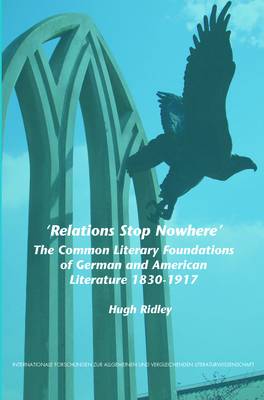
- Afhalen na 1 uur in een winkel met voorraad
- Gratis thuislevering in België vanaf € 30
- Ruim aanbod met 7 miljoen producten
- Afhalen na 1 uur in een winkel met voorraad
- Gratis thuislevering in België vanaf € 30
- Ruim aanbod met 7 miljoen producten
Zoeken
'Relations Stop Nowhere'
The Common Literary Foundations of German and American Literature 1830-1917
Hugh Ridley
€ 158,95
+ 317 punten
Omschrijving
This book attempts for the first time a comparative literary history of Germany and the USA in the nineteenth and twentieth centuries. Its material does not come from the familiar overlaps of individual German and American writers, but from the work of the literary historians of the two countries after 1815, when American intellectuals took Germany as a model for their project to create an American national literature. The first part of the book examines fundamental structural affinities between the two literary histories and the common problems these caused, especially in questions of canon, realism, aesthetics and in the marginalization of popular and women's writing. In the second part, significant figures whose work straddle the two literatures - from Sealsfield and Melville, Whitman and Thomas Mann to Nietzsche, Emerson and Bellow - are discussed in detail, and the arguments of the first part are shown in their relevance to understanding major writers. This book is not merely comparative in scope: it shows that only international comparison can explain the course of American literary history in the nineteenth and twentieth century. As recent developments in American Studies explore the multi-cultural and 'hybrid' nature of the American tradition, this book offers evidence of the dependencies which linked American and German national literary history.
Specificaties
Betrokkenen
- Auteur(s):
- Uitgeverij:
Inhoud
- Aantal bladzijden:
- 320
- Taal:
- Engels
- Reeks:
- Reeksnummer:
- nr. 109
Eigenschappen
- Productcode (EAN):
- 9789042021839
- Verschijningsdatum:
- 1/01/2007
- Uitvoering:
- Paperback
- Formaat:
- Trade paperback (VS)
- Afmetingen:
- 155 mm x 234 mm
- Gewicht:
- 444 g

Alleen bij Standaard Boekhandel
+ 317 punten op je klantenkaart van Standaard Boekhandel
Beoordelingen
We publiceren alleen reviews die voldoen aan de voorwaarden voor reviews. Bekijk onze voorwaarden voor reviews.








